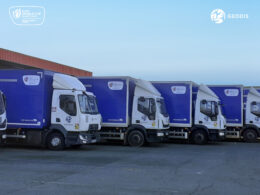The logistics and delivery market has seen huge improvements in recent years that have led to faster, more predictable deliveries. As a result, we’re not only seeing an increase in first-time deliveries, but also greater transparency and higher customer satisfaction levels.
Clearly, this is great news for the industry, but it also means that customer expectations are now higher than ever before, which means that delivery promises can be hard to meet – especially when faced with busy sales periods.
Retailers face a number of pressures during these periods, whether they’re trying to assess how much of their business will require home delivery, predicting the uptake of services like click-and-collect, or considering the impact that promotions like Black Friday will have on delivery schedules and vehicle load.
As such, retailers need to ensure they are talking to their logistics partners constantly during this period. This way, they’ll be able to update their delivery partners as much as possible about both real and likely patterns of demand, so that carriers can identify potential issues around their size and volume limits. Retailers also need to share, as much as possible, their marketing plans with their delivery partners so that any peaks caused by special promotions or sales activity can be factored into delivery plans and timings.
Of course, it’s not just predicting patterns of demand that can catch retailers out during the winter season, but also other factors too, such as bad weather impacting roads and transport networks or other unforeseen delivery disruptions. In 2010, during a period dubbed the Big Freeze, retailers such as John Lewis and Marks and Spencer displayed great communication by bringing forward their Christmas delivery dates after heavy snow made it difficult for their delivery partners to get goods to shoppers on time.
Clearly, retailers have to have contingency plans in place with their delivery partners to know that they will be able to cope with whatever is thrown at them. Forecasting and forward planning is therefore vital at this time. In most cases, patterns observed in previous years can be assessed and compared with the retailer’s expectations for future demand, based on the assumption that online shopping – at Christmas in particular – will only continue to increase.
Most importantly of all, retailers have to be open and honest with their customers. Expected delivery times should always be made clear before an order is placed – as Tesco Direct has been doing – rather than at the checkout. This way, customers can decide whether to continue an order with that particular retailer or switch to one who may be able to deliver sooner. This transparent approach will help to set customers’ expectations at the outset, rather than letting them down later in the process.
This focus on openness and honesty – with logistic companies as well as customers – will not only give retailers a better chance of delivering the actual goods that have been ordered, but will also enable them to deliver on their customer promise, leaving everyone happy over the festive season.













